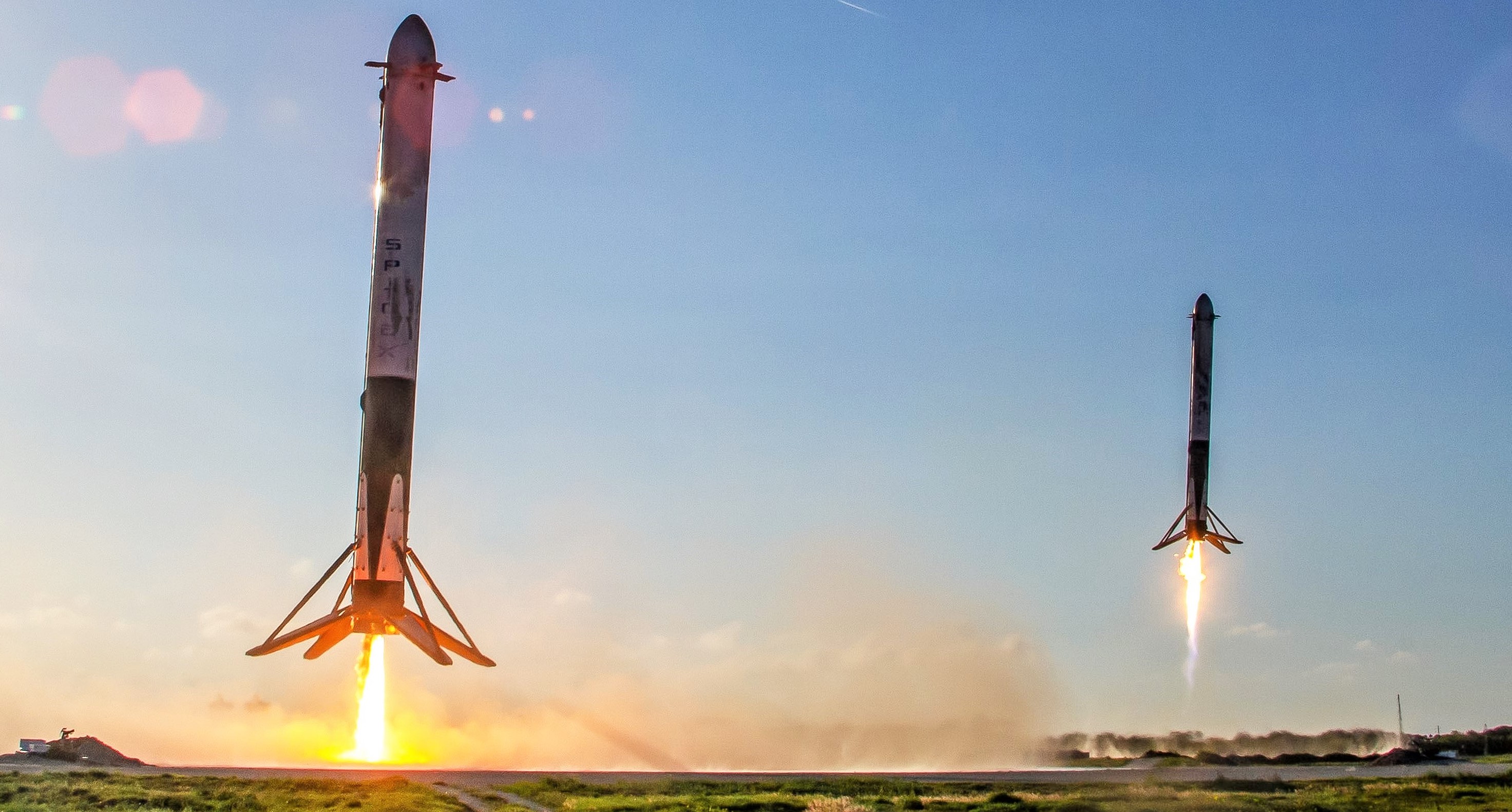The Basics of SpaceX
Let’s start with the man behind SpaceX, Elon Musk. In 1995, at the age of 28, he co-founded a software company called Zip2 and sold it for $340M 4 years later. He then founded X.com, a banking website, which then turned into PayPal and was sold to eBay in 2002 for $1.5B. Musk owned 11.7% of PayPal, and so he earned $165M. That same year, with $100M under his belt to be invested in an aerospace company, he created SpaceX (or “Space Exploration Technology”). Musk’s ultimate goal with this it is to make humans an interplanetary species. That doesn’t just mean leaving our footprints on Mars; it means to colonize it. The man has some strong ambitions that’s for sure.
If you haven’t seen the Falcon Heavy, STOP READING and WATCH THIS.

Before SpaceX entered the game of rocket development, NASA and other government-funded companies such as Boeing and Lockheed Martin were the only players in the space transport industry for decades. These companies had no incentive in becoming more efficient, and with government funding, they would buy all their engines, hardware and software components from third party companies. As you can imagine, some of these 3rd party companies had their own suppliers. This creates a tree of suppliers, with the complex aerospace companies at the top of it. Each of those suppliers had to make some profit, and so by the time the component reached the top of the tree, i.e. the aerospace companies, all the different components became expensive. On top of that, the aerospace companies had to hire teams and spend time just to figure out and make sure the different components made in different parts of the world by different companies actually work well together. SpaceX however, changed that.
SpaceX produces 85% of its components in-house. They are simply going with what makes more economic sense. The problem with the rocket industry is that it’s relatively small, and so there are not too many suppliers for rocket parts. When monopolies exist, that means prices tend to be on the more expensive side.
Not only did building components in-house result in lower costs, but it also sped things up a lot. SpaceX engineers were all under the same roof, designing, developing, building, and testing their components from scratch. SpaceX has big ambitions and short deadlines, so they could not afford to wait for the suppliers (1). With such speedy results, they are able to make money by launching satellites into orbit for private satellite operators. They also deliver cargo to the ISS.
SpaceX has contracts with three major types of customers: commercial telecom companies, NASA, and the US military. All have different needs, but the end goal is to get whatever they need up into space. As SpaceX is reusing parts of their rockets, they offer competitive prices for launching, all while making a profit.
For example, SpaceX’s main competitor, United Launch Alliance (ULA), which consists of Lockheed Martin and Boeing, charges around $400M for a military satellite launch, while SpaceX charges around $80M (5 times cheaper).

Here is what’s next for SpaceX: the Big Falcon Rocket (BFR).
Notes:
1
This was probably very difficult in the early stages, but with more practice and experience in in-house development, and with more people and more automated systems, things got easier. Actually, it was an extremely long road for them to get to where they are now. They’ve have lots of failures, as demonstrated in their video here.

Sources:
https://en.wikipedia.org/wiki/Elon_Musk http://www.youtube.com/watch?v=h97fXhDN5qE http://www.reddit.com/r/spacex/comments/24o5pf/what_doesnt_spacex_produce_inhouse